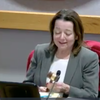After $4M cleanup, EPA is poised to delete Mercury Refining Company from priorities list
ALBANY COUNTY — The Environmental Protection Agency is currently seeking public comment on deleting a Superfund site that once housed a mercury recycling center from its National Priorities List.
The Mercury Refining Company Inc., originally known as MERECO, is at 26 Railroad Ave. on the sliver of land to the northeast of the panhandle of Albany that is located in Guilderland, and also partially in Colonie.
“EPA can propose a Superfund Site for deletion from the National Priorities List when all the remedial action has been completed, and the remedial action objectives identified in the Record of Decision have been met,” Elias Rodriguez, an EPA spokesman, told The Enterprise when asked about the process for deleting a site from the National Priorities List.
The address to email public comment, which is open until Sept. 16, is mongelli.thomas@epa.gov.
The cleanup cost close to $4 million, Rodriguez said, citing the Remedial Action Report, which indicates a cost of $3,912,100.
The EPA and the New York State Department of Environmental Conservation oversaw the cleanup.
Asked who paid for the cleanup, Rodriguez said, “EPA entered into numerous agreements with 418 responsible parties at the site, including an ability to pay settlement with Mercury Refining Corporation. The remaining parties are entities that sent mercury contaminated materials to the site.”
Of the 418 responsible parties, the nine parties that contributed the largest share of mercury-contaminated material performed the cleanup under EPA oversight, he said.
Asked who would be responsible for cleanup if problems recurred at the site, Rodriguez said those same nine largest parties “are under a consent decree, under which they performed the cleanup and for which they are responsible for operation and maintenance.”
He also said, “Once a Superfund site has been deleted from the NPL, the site can be redeveloped as per the requirements set forth in the associated institutional controls ….
“Even though a Superfund site has been deleted from the NPL, EPA has the authority to revisit any remedy on such a site at any time in order to perform additional cleanup work. We can also require the potentially responsible parties to perform any such work.”
History
The Enterprise reported, in 2011, that approximately 20,000 people lived within a one-and-a-half mile radius of the site, and 100,000 people lived within three miles; the closest residents lived one-quarter mile from the site, which is in an industrial zone.
A health-risk assessment from the EPA at that time found there was a significant potential risk from direct exposure to the mercury-contaminated soil and groundwater, and an ecological-risk assessment found the potential risk to ecological receptors in a nearby tributary was “unacceptable.”
The Superfund site is roughly half an acre on a 2.8-acre parcel where MERECO, starting in 1955, received and stored hazardous waste from off-site, reclaiming silver and other precious metals as well as reclaiming metallic mercury, by using condensation furnaces, from mercury batteries and other mercury-bearing materials such as thermometers, fluorescent bulbs, spill debris, and dental amalgams, according to the EPA’s May 30 Final Close Out Report.
Before 1980, various solid-waste materials contaminated with mercury from the reclamation processes were dumped over an embankment of an unnamed tributary to the Patroon Creek, which flows five miles downstream into the Hudson River.
From 1980 to 1998, waste batteries and other mercury-containing materials were stored in drums on wooden pallets within paved areas of the MERECO property and disposed of off-site.
Once mercury enters soil and water, it can be converted to methyl mercury, which can be absorbed quickly by organisms and can cause nerve damage, as well as kidney damage, stomach problems, and reproductive failure.
Investigations by the DEC had shown that batteries and other materials containing mercury were dumped behind a furnace building on the site until 1980. After 1980, they were stored in drums on wooden pallets on paved areas.
DEC tests revealed that the waste was at least three feet beneath the surface of the ground, and stream sediment tested high in both mercury and polychlorinated biphenyls (PCBs).
In 1985, the DEC excavated and removed some of the contaminated soil. In 1989, a new container storage building was added to the site, and, in 1994, new retorts — closed vessels used for decomposition by heat — were installed.
The town of Guilderland’s zoning board of appeals approved a variance for Mercury Refining in 1988, for a building to cover drums of hazardous waste that were being stored on concrete pads.
“There’s not too much appealing about this whole matter,” said then-chairman of the board, Tim Sheehan, at the time. The town’s zoning code in the 1980s prohibited storage of hazardous waste, but Mercury Refining had been in business since 1955, before the code was established, so it was grandfathered in.
The board was aware of, and discussed, the fact that the DEC had been investigating and cleaning up the site.
Though zoning board members were uncomfortable with the idea of the presence of mercury in the town, they approved the structure because they felt it provided a certain measure of safety, and the DEC had already capped one storage pad with clay and installed groundwater monitoring wells.
“It will provide better protection for the people of Guilderland and the materials that are stored there,” said board member John Smircich at the time.
A hazardous waste corrective action permit was issued by the DEC to Mercury Refining Company in 1996, requiring the company to remove contaminated soil under an old furnace building, and to perform long-term monitoring of soil and groundwater on site, and sediment in the Patroon Creek.
In 1998, MERECO discontinued reclaiming mercury, but continued reclaiming precious metals at the facility, which it still does, but which is exempt from EPA regulation.
Also in 1998, MERECO’s permitted hazardous-waste storage building was leased to Mercury Waste Solutions - New York Inc. but in 2003 that company surrendered its lease of the permitted hazardous waste storage building, and stopped hazardous waste operations.
MERECO repeatedly failed to comply with the DEC permit, leading to the DEC’s request for the EPA to take over as the lead agency.
A remedial investigation and feasibility study, conducted by the EPA between September 2000 and February 2003, revealed the presence of mercury contamination in surface and subsurface soils, groundwater, creek sediments, fish tissue, and catch basins, according to the EPA’s close-out report.
Methyl mercury contamination was also observed in stream and pond sediments and surface water. The human health risk assessment determined that carcinogenic risks and noncarcinogenic hazards for exposures at the site exceeded the EPA’s target Hazard Index and the EPA’s target cancer risk range for recreational use of the creek or pond and for residential use of the groundwater from exposure to mercury.
The investigation also found potential future cancer risks to workers on the MERECO property and bordering the MERECO property.
Results of the Screening Level Ecological Risk Assessment indicated the potential for risk to ecological receptors, including aquatic invertebrates, freshwater fish, amphibians, insectivorous birds, and piscivorous birds and mammals from exposure to mercury in surface water, sediment, and soil.
Cleanup
The Final Close-Out Report details several actions for remediating the site.
For soil and sediment cleanup, the EPA approved a plan in September 2013. Soil and sediment excavation and disposal began on Oct. 1, 2013 and was completed on Dec. 30, 2013.
This resulted in the removal and off-site disposal of 5,588 tons of non-hazardous soil and sediment and 173 tons of hazardous soil. Excavated areas were backfilled with clean soil and restored to their original surface cover condition — that is, paved or reseeded, according to the EPA.
The close-out report also details In-Situ Solidification/Stabilization, known as ISS. The purpose of the ISS portion of the cleanup was to immobilize contaminants in surface soils, subsurface soils, and soils below the water table in areas where mercury concentrations in groundwater exceeded its cleanup goal, the report says.
The ISS work, which took place between June 12, 2014 and Oct. 31, 2014, involved the use of an auger system to blend columns of soil within the ISS area with a mixture of Portland cement and a sulfur-containing compound. A total of 235 overlapping, six-foot diameter columns were installed and extended into a clay layer underlying the site.
Pre-excavation of the ISS area resulted in the removal and off-site disposal of an additional 2,618 tons of non-hazardous soil. Excavated areas were backfilled with clean soil and restored to their original surface cover condition — again, paved or reseeded.
The EPA completed a final inspection of the remedy in April 2015 and a Remedial Action Report documenting both the soil excavation and ISS portions of the remedy was approved by EPA on August 26, 2015, Rodriguez notes.
Asked if the Superfund site and the neighboring Patroon Creek are now safe, he responded, “The February 2024 Five-Year Review indicated that the Mercury Refining site is protective of human health and the environment now that all institutional controls, including environmental easements, are in place.”
He concluded, “EPA will continue to conduct statutory five-year reviews for the site, since contamination remains on-site.”



